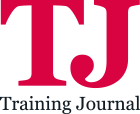Rethinking hiring and learning? You’re not alone. Mark Thompson explores why a tick-box approach is out, and how spotting potential and weaving learning into everyday work can future-proof your business. From agile assessments to leadership-led learning, it’s time to invest in people who grow as fast as the world changes
For years, hiring decisions have been shaped by rigid qualifications – degrees, CVs and checklists of experience. But as the workplace evolves, so must our collective hiring mindset. What if the real key to success isn’t what candidates know today, but how fast they can grow tomorrow?
The future of hiring isn’t about who ticks the most boxes, but about who can grow the fastest
With AI, automation and evolving job roles, past experience is no longer the best predictor of future performance. Today, 70% of hiring managers prioritise skills assessments over traditional hiring filters, such as CVs and cover letters, and 45% of employers are moving away from degree requirements. This shift acknowledges that credentials alone don’t determine workplace effectiveness. That’s a positive change. But to truly future-proof their workforce, employers must go beyond skills assessments and embrace potential-based hiring – identifying candidates with the adaptability, resilience and drive to grow into their roles.
From looking at skills to hiring potential
A strong first step is creating a comprehensive skills taxonomy that identifies the key attributes needed for success in a role, aligning them with broader business goals. This ensures hiring decisions are not just about filling a position today but about investing in talent that will drive long-term growth.
The recruitment process should also be designed to uncover true potential. Scenario-based interviews help assess how candidates approach problem-solving in real-time. Targeted assessments can measure how candidates navigate cognitive flexibility and learning agility – all critical traits that indicate a person’s ability to grow.
By prioritising potential over immediate proficiency, businesses can build a workforce that is more adaptable, innovative and prepared to meet future demands.
Making learning an everyday habit
Continuous learning needs to be woven into the fabric of daily operations. Development should be seen as a natural part of every employee’s journey, and learning happens in multiple ways. Opportunities should be created for different learning styles to flourish, such as formal programmes, peer interactions, hands-on experience and self-directed exploration, rather than standard training sessions.
This makes learning accessible and engaging. Use technology for bite-size learning, collaborative spaces for knowledge sharing, and align development with career goals and company objectives. Online self-based assessments are a good way to achieve the latter by allowing employees to take ownership of their own developmental needs.
When learning becomes convenient and meaningful, employees are more likely to embrace it as part of their daily routine.
Active participation in continuous learning should come from all levels of the organisation, not just employees. Leaders must champion and set the standard, while managers should actively create development opportunities for their teams. This collective commitment creates a self-reinforcing cycle where learning and development become integral to the organisation’s identity.
Measuring impact and progress
Tracking growth and engagement is key to demonstrating how successful potential-based development is. Regular performance reviews should measure skills progress, while monitoring employee engagement with learning initiatives keeps momentum high.
The real test? Business impact, boosted productivity, lower turnover and stronger teamwork. Continuous feedback from employees, managers and stakeholders ensures programmes stay relevant and effective. By staying data-driven, organisations can maximise their development investments and make smarter decisions for the future.
The future of hiring isn’t about who ticks the most boxes, but about who can grow the fastest. Companies that recognise this shift and invest in potential will gain a workforce ready for whatever comes next.
Mark Thompson is General Manager UK at GoodHabitz




